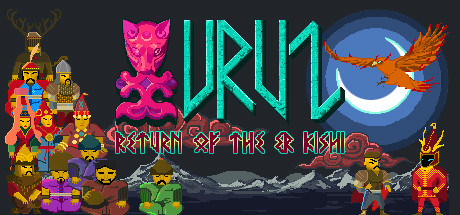How much is novelty worthy?
Type: Singleplayer
Genre: Platformer, RPG, Action
Developer: Berzah Games
Publisher: Berzah Games
Release date: 2 Oct, 2020


There are not many games that are based on Turkish and Central Asian mythology. This might in fact potentially be the first one purely based on it that gets an international release. This game is based on the stories found in The Book of Dede Korkut, which is a collection of pre-Islamic Turkish stories. That alone sets it apart from the crowd.
URUZ “Return of The Er Kishi” is a 2D platformer, with some RPG elements. The developers claim that it’s a metroidvania, but there’s very little backtracking, and you’ll just unlock new areas as you progress through the story, rather than by finding items or abilities that let you bypass obstacles.
A note on the language in the review, before we get started. I’m not too well versed in Turkish and central Asian mythology, I know the basics but it’s not an area I’ve studied, nor do I speak any Turkic language. The game uses names and terms that without any context or familiarity with the languages won’t make much sense, so I’ve tried to translate them for this review, but the translations are probably not spot on. This review is also for the English version of the game, and I would imagine that some of the complaints I have are not applicable for the Turkish version.
Story & Setting
Kazan Beg, leader of his tribe, looked upon his son, Uruz. He was disappointed with the man his son had become, despite being 18 years old he had never once fought a battle, never once killed an enemy in the defense of his tribe and never fired an arrow. When Uruz heard his father’s words, he offered to take up arms. His father was pleased, and they went out on a hunt.
What they did not know was that the Black Baron’s men were watching them. During their hunt they were attacked. Kazan Beg told Uruz to stay back, but Uruz defined him and charged the enemy, leading a few men into battle. He was quickly overwhelmed by the enemy, captured and had to be saved by his tribe.
Kazan Beg was furious, and refused to talk to his son. In order to appease his father, Uruz decided to once more attack the Black Baron’s men, but after returning to his tribe after a successful raid the moon turned red, and creatures from the Netherworld started pouring out. Uruz watched how the souls of his fellow tribesmen were stolen, but he knew that there was nothing he could do now to save them. Instead of sacrificing himself he fled. Now the only way he could save his people would be to find the shamans, and with their help drive back the evil that had been unleashed upon the world.
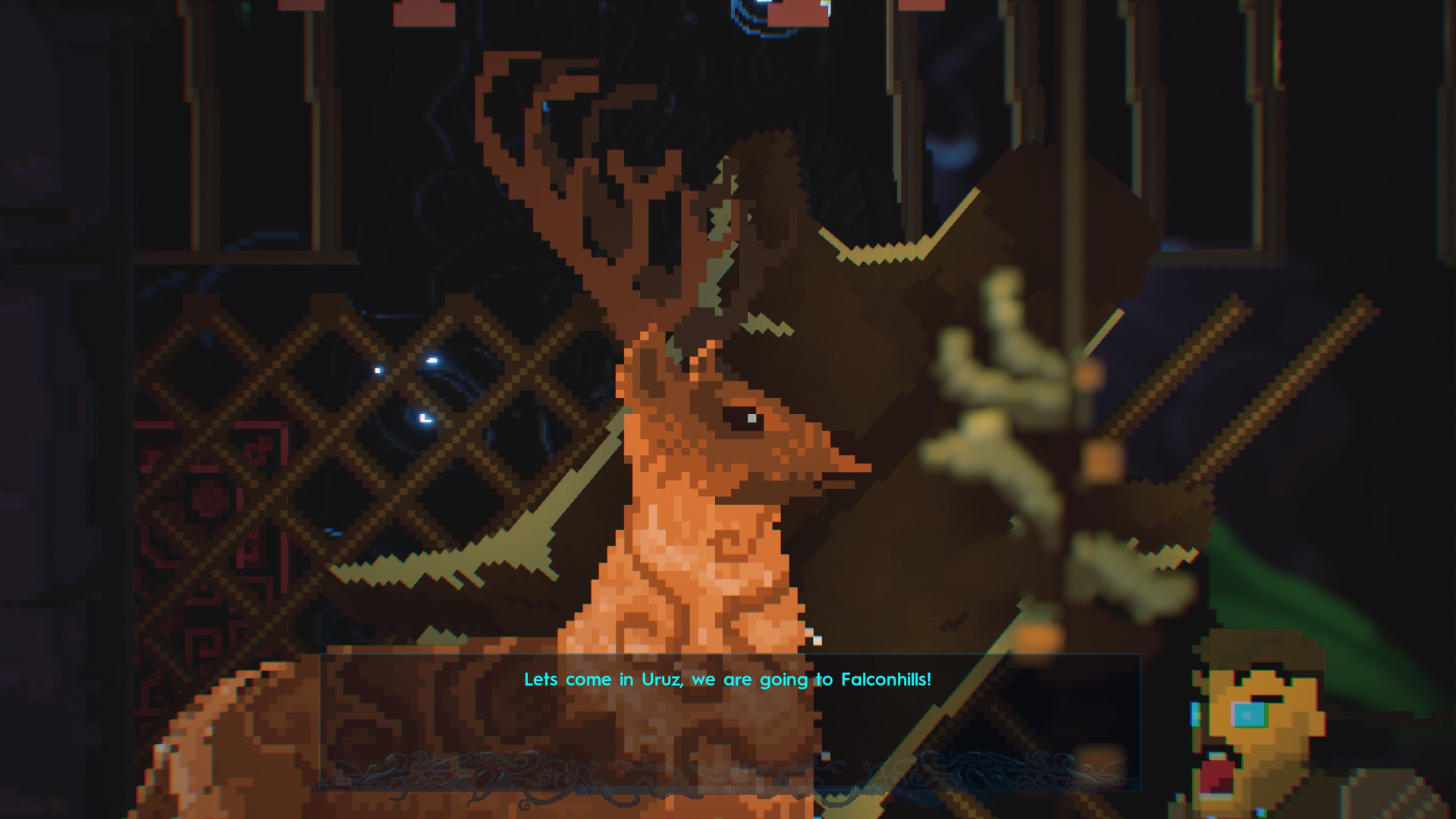
And that’s how the game starts. Uruz is forced to venture out on his own, seeking the great shamans. The story in URUZ “Return of The Er Kishi” is very front-loaded. You get two lengthy story sequences right at the start that’s meant to set things up, but having so much going on before the game really starts makes it hard to remember everything. It also gives the story an uneven pacing, as most of the game is far lighter on story. There’s still a few cutscenes and people to talk to later on so the story does not stop after the first half hour, but it changes both pace and tone.
The story is further hindered by the translation. It’s not awful, but there are times when the translation becomes a bit spotty, with weirdly structured sentences and foreign words that are not explained properly. This game was originally in Turkish and first and foremost made for a Turkish audience, and it shows.
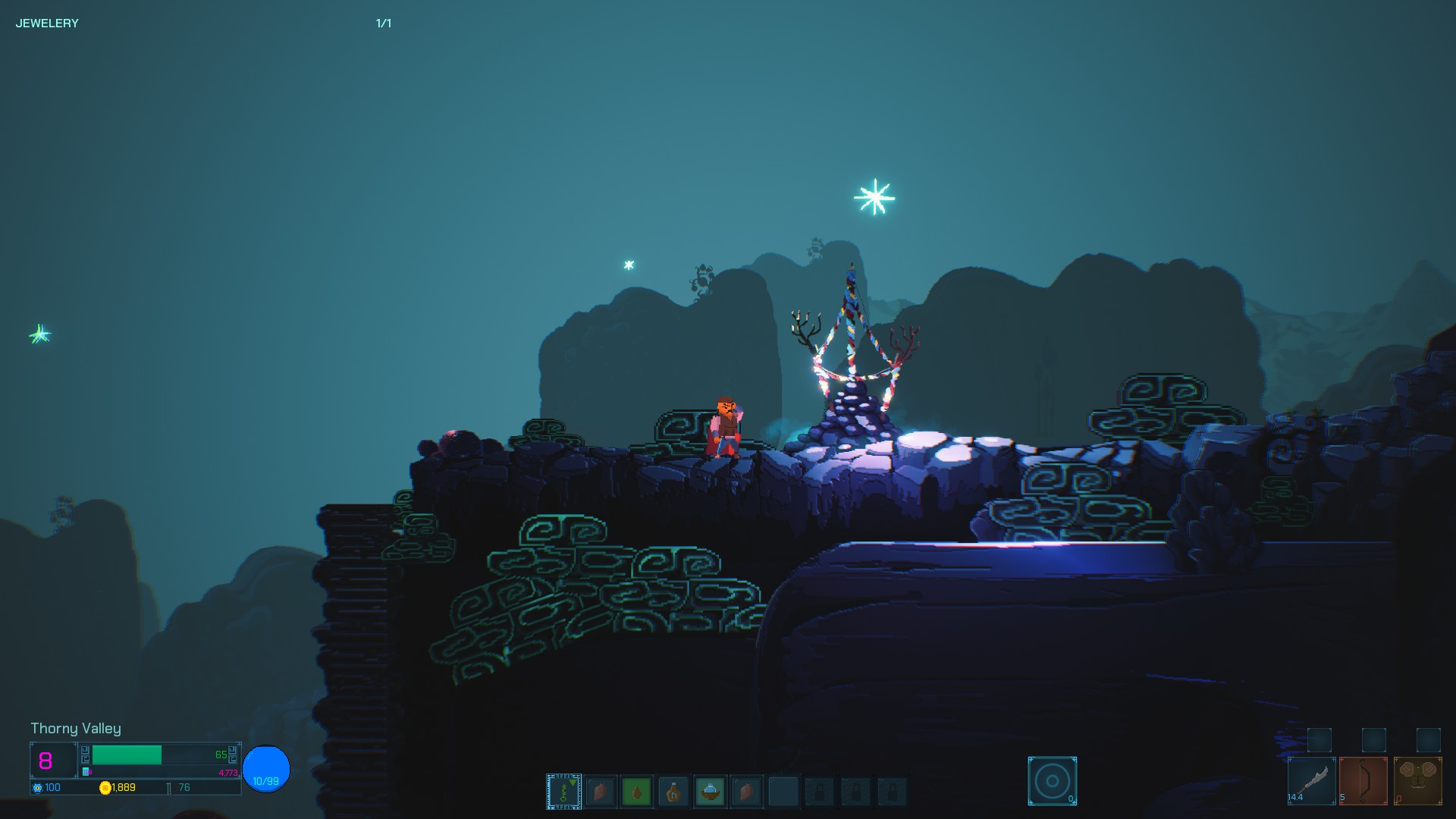
Presentation
Combining pixel art sprites with a 3D world is not something brand new, a few games have done that in the past, but few games commit to the look to the same extent as Uruz. Almost all objects, as well as characters, enemies and so on are flat objects. Combined with the distinct pixel art, this gives Uruz a look of its own that’s unlike anything else on the market.
The pixel art itself is quite well made. It looks quite chunky, with little shading on the pixel art itself, unlike the smooth pixel art you see in something like Owlboy, but this also adds to the games unique look. The game is not afraid of putting characters close to the camera, so you can see each individual “pixel”. This could have looked terrible if it was done haphazardly, but combined with some very expressive animations, it instead ends up looking remarkably good. There are also some impressive lighting effects on display here, particularly on certain background and foreground objects. A few things can look a bit weird though, like how the upper body of the main character moves when he’s aiming his bow, but overall this is a really good looking game, at least for someone who enjoys pixel art.
This is backed up by a fitting soundtrack. The soundtrack for Uruz, much like the graphics and story, a unique feel to it, and uses some instruments that you rarely hear in game soundtracks. It does a really good job at setting the tone for the game, and the songs are varied. As for the sound effects, they’re fine. They don’t stand out in the same way as either the graphics or the soundtrack, but they still do the job well enough, and with a few minor exceptions, work well.
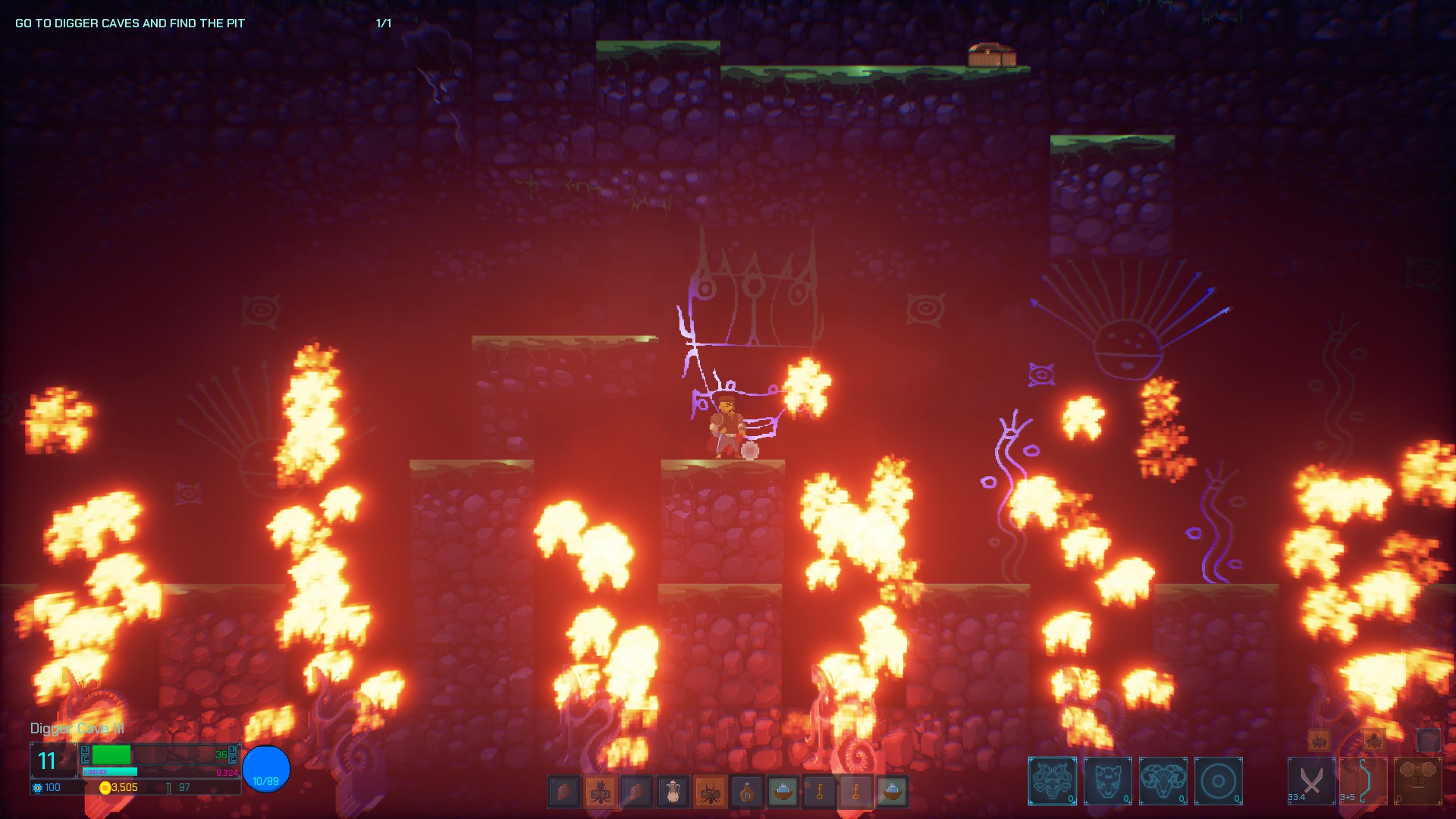
Gameplay
Uruz is a hard game to sum up, because it changes a lot as the game progresses. For the majority of it though, it will be a relatively typical 2D platformer with some light RPG elements. You’ll jump from platform to platform, kill enemies, avoid hazards like spikes and poison pits and so on. This works relatively well, with a few caveats. For one it can at times be unclear exactly what you can stand on, and what blocks enemies and projectiles. This is not even entirely consistent in the game, there are objects you can pass through, but your arrows and most enemies can’t. This is not a frequent enough problem to be a big issue, but it can still be a bit frustrating.
Your character is armed with a melee weapon as well as a bow. Both of these can be upgraded over the course of the game, but they still function more or less the same way. Attacks push enemies away from you. Managing distance with the enemies is important, as particularly later enemies hit quite hard. Just going in swinging your sword like a madman will get you killed, so making sure that enemies gets pushed away from you before they have time to attack, and timing your attacks so that they don’t have time to strike you between your swings is crucial
Defeating enemies and progressing through the story gives you experience points which can be spent on three different skill trees. One that improves your attacks, one that improves your defense and a third one that improves miscellaneous things, like making enemies drop more money. It’s a decent enough system, but a bit imbalanced. Some skills seem to be far more useful than others, and the rate at which you can experience makes it so that you’ll reach a point where you’ll pretty much stop leveling up. It’s not a broken system, it could just have used a bit more polish.
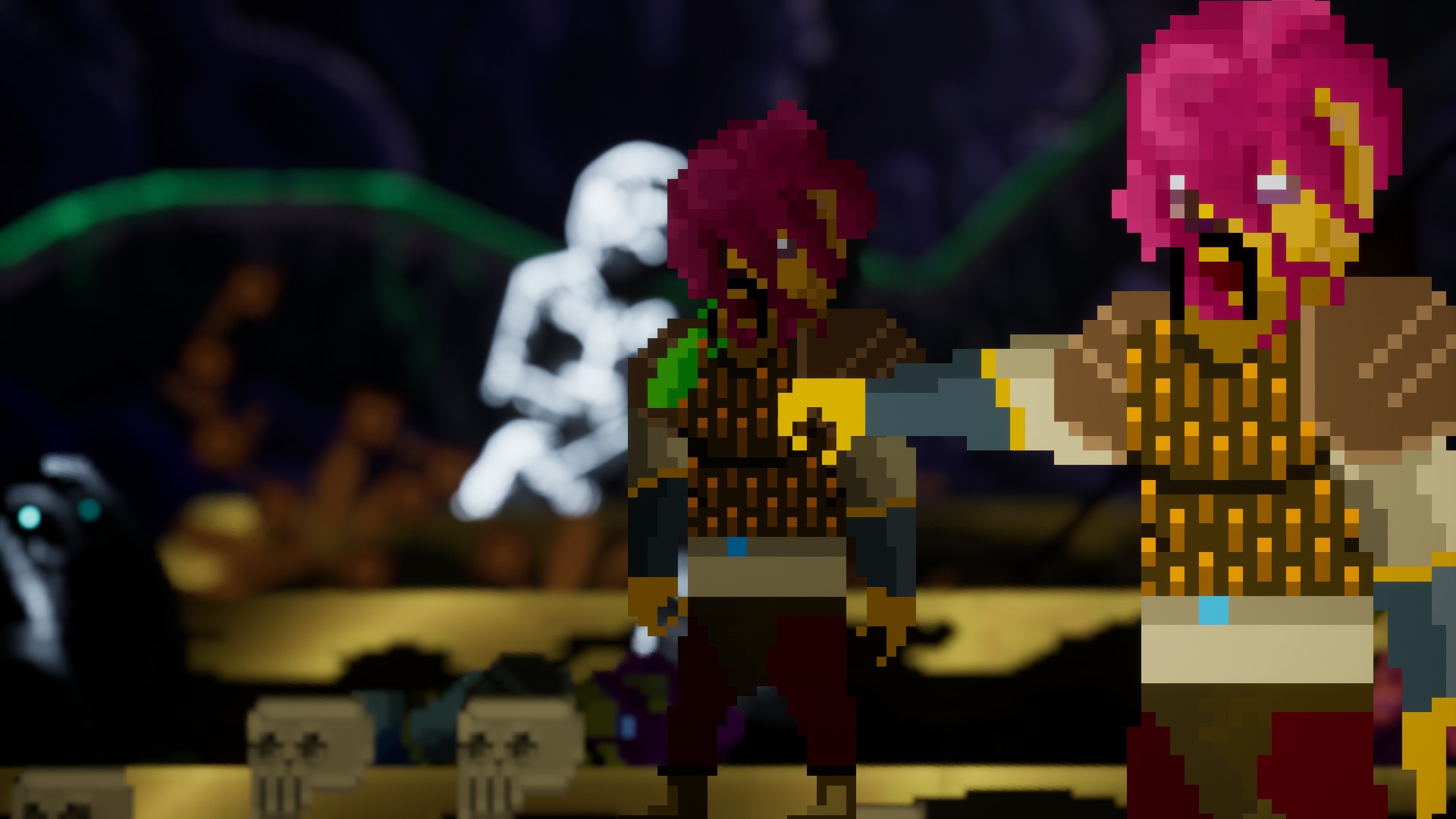
What is broken though is the economy. Enemies drop money and a few other tasks will also earn you some gold. The money can then be used to buy consumables and new weapons, but the issue is that money will more or less stop mattering as soon as you’ve got the best weapon in the game, which will be quite early, yet the game will still shower you with it. Consumables also lose most of their value once you get access to magic, as now you can heal yourself on demand, without having to navigate the somewhat clumsy inventory system. The introduction of the magic system does in fact make the game significantly easier, and the first part of the game, before you get access to magic, is harder than the later parts. Magic still needs to be charged up by killing enemies, but with the amount of enemies the game throws at you, this does not take very long.
Speaking of challenge, the boss battles are a mixed bag in this regard. The first real boss is the hardest one, if you ignore the boss that did not seem to work. The bosses are all big and impressive looking, and some of them feel like good tests of your abilities, while a few of them fell flat. One of the bosses seemed to be broken, as it was impossible to harm it, and its attacks ended up not syncing up with its attack animation. After a while it just died though, with no explanation of what was going on. Another boss would just turn on the spot to face you, with the point it was turning around being pretty much the tip of its nose, so it could flip around you if you got under its nose, with no animation being played. It did not make the boss fight harder, but it looked weird.
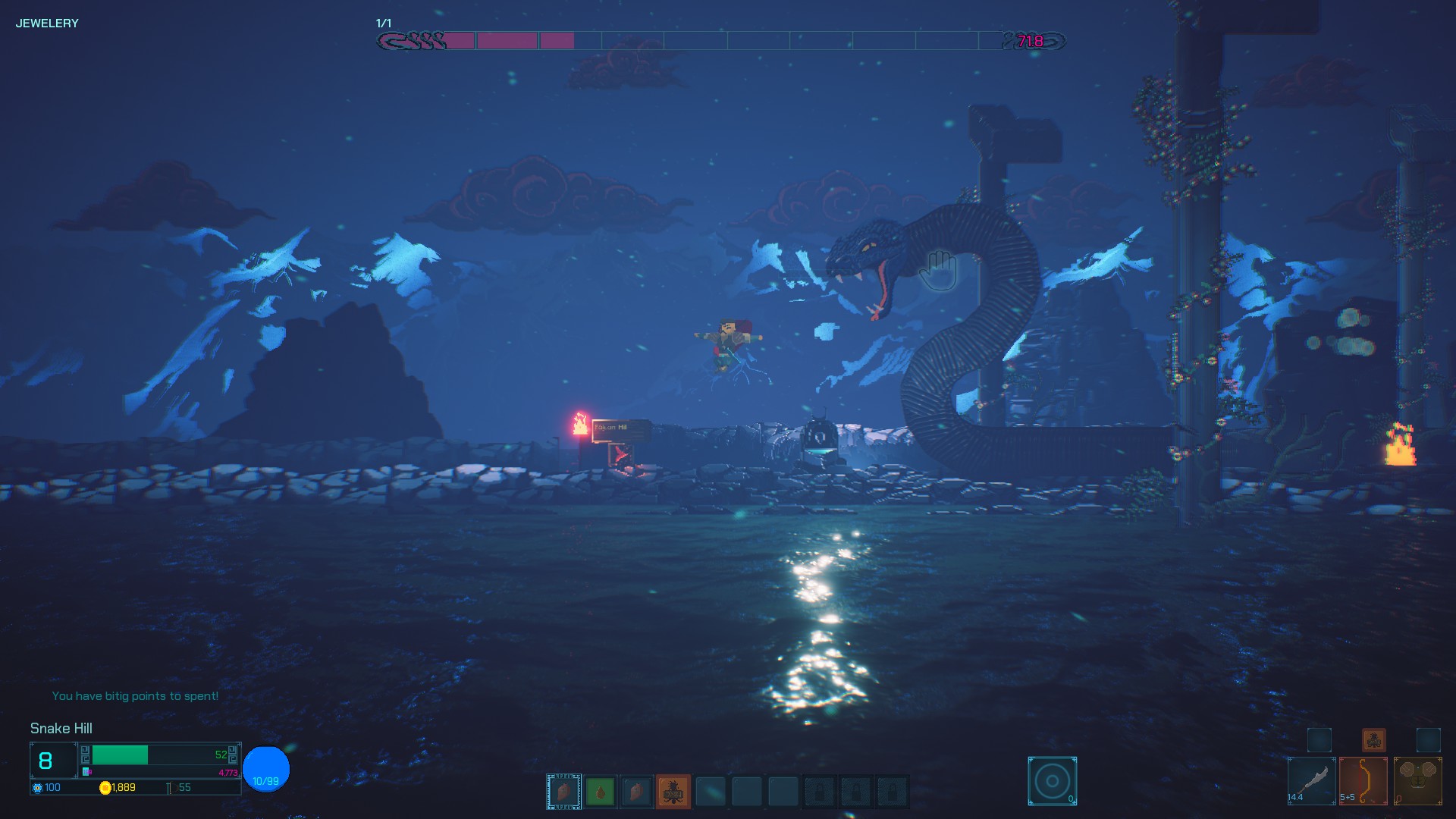
If you’ve just played the first 30min of the game, the above description might not sound very familiar. That’s because Uruz feels like a completely different game early on. The controls and the interface are the same, but the structure of the game is not. In the early game it feels like the game will lean more towards being a traditional RPG, only a side-scrolling one, with quests and plenty of NPCs to talk to. The two early fights, one which you’re supposed to lose and one that you need to beat, are both in combat arenas, with hordes of enemies and little access to healing. The first real fight, against over 40 enemies in what’s effectively an arena, is probably the hardest fight in the game, if you ignore the bugged boss.
There are also a few other things that changes up the gameplay. After most major encounters there’s a kind of riding obstacle course that luckily does not last very long. They’re a nice change of pace, but would quickly overstay their welcome if they lasted longer, and at one point your character learns how to fly.
Gamepad support is something that’s advertised on the store page, and yes, the game does support using a gamepad, but it does not work very well. This is one of the few 2D platformers that don’t use Abuse-style controls (that is you use the mouse to aim your attacks, and the keyboard to move) where using the keyboard is easier than use a gamepad.
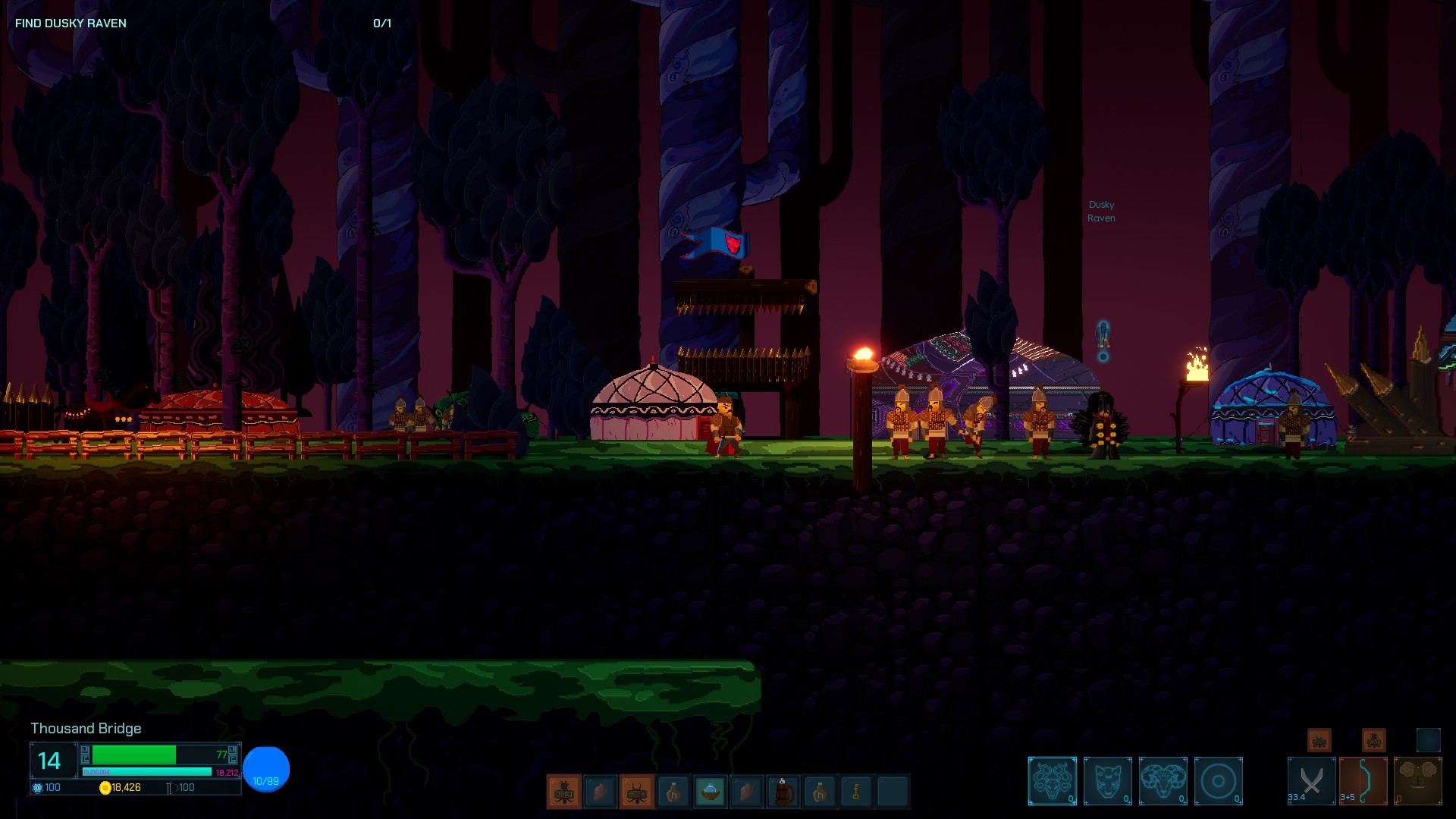
Closing Thoughts
Uruz is a game with a lot of issues. It’s buggy, the controls don’t work too well, the translation is spotty and there’s some balance issues. But I actually had fun with it and the developer has been really good at listening to feedback and fixing things that don’t work. This is the second iteration of this review, and while I’ve not had the chance to test everything that changed already, the developer really took the issues I brought up to heart and have been very quick to roll out patches. The video at the start of the review is from an older version of the game, and things have changed a lot since it was recorded.
This is still not a perfect game though, and I can’t wholeheartedly recommend it to everyone, but it is an interesting game. For some the setting, story and art style will be enough for them to overlook the other issues the game has, but for people who are looking for a polished experience, this is not the game to get. For me the novelty carried the game. If you’re on the fence, wait for a sale. And I would personally love to see what else the developers come up with next, now that they’ve got a bit more experience making games.

